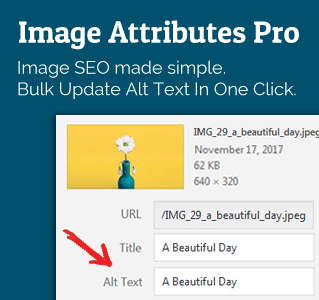Primarily we think of mutual funds as risky investments but there is a whole another category where risk (and reward) is relatively low – Debt Mutual Funds.
Debt mutual fund is a semi-secret gem that not many really talks about.
Earlier we read how all investments can be classified into Debt investments and Equity investments. Debt mutual funds primarily invest in Debt instruments like government and company bonds, Treasury bills (T-Bills), debentures etc. They hope to generate a fixed income.
When a government or a company wants to raise money they have the choice to issue a bond. A bond is basically a contract that says, ‘if you give me 1000 INR today and 5 years from now I will give you 1400 INR back’. It’s an assured return as long as the issuing agency doesn’t default.
That brings us to the risks involved.
Are Debt Mutual Funds 100% safe?
Absolutely not. They can be just as risky as equity funds if you do not choose the right fund.
There are many complicated risks, but the biggest one in my book is credit default risk. This is where the bond issuer fails to pay up and you lose both your principal and interest. Never lose your principal.
Remember that the goal of investing in debt is safety. We are not looking for high returns or profit, if that was the case investing in equity would be more rewarding.
So we do need to do due diligence when choosing a debt mutual fund.
Why Invest In Debt Mutual Funds? Why Not FD?
If Debt funds come with risks and if returns are not any better than bank FD’s, then why not stick with FD’s? With Bank FD’s at least you know what returns you are going to get.
This is a very relevant question. Here me out.
Debt mutual funds are better from a taxation point of view due to Indexation.
Update: Unless something changes, as of 1st April 2023, the tax benefit of debt mutual funds no longer exist. All gains will be taxed as per slab. This change does not affect debt mutual fund units purchased before 1st of April 2023.
Update on 10 August 2024: In the most recent finance budget, all indexation has been taken out. For units purchased before 1st April 2023, taxation will be 12.5% of the gains (for units held for more than two years).
If you stay invested for less than three years, debt mutual funds is no different from your bank FD from a taxation stand point. The interest you generate is taxed as per your income tax slab.
Only difference is that you are taxed only when you redeem (i.e. withdraw) funds as opposed to being taxed each year in a bank FD.
In debt, profit on investments is considered as Short-Term-Capital-Gain (STCG) if you stay invested for less than three years.
When you stay invested in a debt mutual fund for over 3 years, any profit you make is considered as Long-Term-Capital-Gain (LTCG). Tax for LTCG in debt funds is 20% with indexation right now.
Here is a simplistic view of how indexation works.
- Let’s say you invested 1000 INR each in a bank FD and mutual fund on the same date with 10% annual return for three years.
- To keep things simple, we will not compound the interest. So at the end of three years you will receive 1000 INR (principal) + 300 INR (interest) from both the FD and the debt mutual fund. i.e. 1300 INR each.
- Your profit in each case is 1300 – 1000 = 300 INR.
- Assuming you are in the 30% tax bracket, for the FD you will pay 30% of 300 INR = 90 INR as tax. (This was paid each year btw, not at the end of third year for FD, this is just a simple example.)
- Since you stayed invested for 3 years, your returns from the debt mutual fund is eligible for indexation.
- When indexation kicks in, your principal is adjusted for inflation. In our example, if we assume inflation was 5%, at the end of three years you need 1150 INR (i.e. 50 INR inflation for each of the three years) to buy something that was worth 1000 INR three years ago.
- So your actual gain is only 1300 minus 1150 = 150 INR.
- The tax is 20% of 150 INR = 30 INR.
As you can see with FD you paid 90 INR tax and in the debt mutual fund you only paid 30 INR. The saving in tax needs to be factored in when evaluating returns from a debt mutual fund.
Note: the above is a very simplistic example that will help you grasp the concept. The actual math uses a Cost Inflation Index and is better explained here.
Pro tip: Indexation is calculated once per financial year, so if you invest in March 2020 and withdraw in April 2023, you can claim the benefit of 4 indexations, not three. Going back to our example, the tax on the 300 INR profit will be just 20 INR. (Credit to the article linked above from Stable Investor.)
As a home-work 👨🏫, try to figure out how the tax is 20 INR and not 30 INR or 90 INR.
Debt mutual funds allow for partial withdrawal.
When you buy any mutual you are buying units of the fund. Just like you buy shares in a company. Each unit has a price (called NAV). Fractional purchases are allowed, which means you can buy 0.1 units of a mutual fund.
- Suppose you invest 100,000 INR into a mutual fund that has NAV of 100 INR, you will be issued 1000 units of the fund.
- You can sell (redeem) any number of units that you own at will. You do not have to redeem all at once.
- If you invest 100,000 INR in a bank FD and you need 5000 INR from it, the only way is to prematurely close the fixed deposit (and pay a penalty for doing so) and then re-invest the remaining 95,000 INR.
- Most debt mutual funds have no exit load after the 7th day, so your lock-in period is only for 7 days!
So if you invested 100,000 INR with the plan to use it in a year, but only needed 75,000 INR, the remaining 25,000 INR can stay invested and grow. Who knows you might not need it for another two years (total three now) and then you can account the gains as LTCG with indexation.
When Should You Use Debt Funds?
- To act as the debt part of your long term portfolio. You can book profits from equity funds and move them to debt funds as you get closer to your goal.
- To plan for short term goals. Plans with in the next 3 years.
- To park funds that you are not sure where to invest just yet.
- For portfolio rebalancing.
For most people, it’s best to keep your emergency funds as a bank fixed deposit.
Note that emergency funds is not the same as your day-to-day funds. Use a savings bank account (just like you do now) for day to day payments. As the name implies, it’s for emergency.
No, impulse shopping a new dress is not emergency! 😁 Being jobless in the height of COVID lockdown is! 😷
Withdrawal from a debt mutual fund typically takes 48 hours from the time you initiate the request to the time it lands in your bank account. Some mutual fund houses offer insta-redeem up to 50,000 INR and some others even offer debit cards.
How I handle it:
- I use a combination of bank FD’s, PPF and debt mutual funds. Bank FD’s are taxed, but RBI insures up to 5L. Invest in banks that are too-important-and-too-big-to-fail.
- If a mutual fund house closes down, not much happens to the economy, but if SBI was to close down tomorrow, I don’t know if we should be worried about investment or about facing a riot. (I am not recommending SBI, I do not have an SBI account as of now.)
- Debt funds are mostly for the debt part of the long term portfolio.
Types of Debt Mutual Funds
Just when you think you know enough there is more, huh? Of course, debt mutual funds is even more complicated than equity funds (in my opinion based on what I know so far).
You can read up on all the types yourself, but the two types that I want you to focus on are:
- Liquid funds. These funds invest in instruments that mature in 91 days. This is a perfect sweet spot for risk-vs-reward for short term goals. You will see as you learn more.
- GILT funds. The underlying instrument is Government securities. However before you get too excited, GILT fund is NOT for short term investment.
I am fascinated by GILT funds, so I will definitely write about it in the future.






Leave a Reply